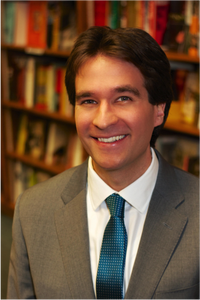Rabbi Joshua M. Z. Stanton

Core to what we do in the New York area is evident in the third policy recommendation (Community/Kehilah): empowerment. Millennials are not willing to simply “consume” Jewish content, but want to be active content creators, program builders, and visionaries helping to map out the communities in which they live. If there is a not-so-secret (and yet surprisingly rare) element in Tribe, it is our inverted leadership structure. In our experience, whether or not programs take part in a synagogue (though more often not) is ancillary to how they take place, who leads them, and who feels energized by them.
Tribe is composed of an 8-person “Board of Visionaries” that visions and guides everything from our large monthly Shabbat services to smaller Shabbat dinners, professional development gatherings, opportunities for interfaith collaboration, study opportunities, and travel overseas. It is defined by intensive collaboration between lay leaders, who almost always work in pairs (or small groups of up to half a dozen). There is also an outward-facing aspect to our Board. Board Members are themselves called upon to empower other Millennials to lead programs, share ideas, and build the Jewish community they want to live in. This loose structure of lay leaders empowering other lay leaders (and equipping them financially, logistically, and with publicity) tends to be relatively free of bureaucracy, but also can leave some roles more amorphous and cause some headaches about boundaries and coordination between similar initiatives. It would not be possible without the careful cultivation of lay leaders, continual communication about areas of work and growth – and the active empowerment of our Board and community members.
This reality for us, in a burgeoning community of around 1,200 Millennials, raises at least two questions: a) what did our Millennial leaders create when given significant opportunity to build a community of their own vision and; b) what is the role of a rabbi in a community that is so significantly lay driven?
To our surprise, the Millennials we are working with (8 members of our Board of Visionaries, working with perhaps another 20-30 leaders for programs that reach around 1,200 Millennials) do not seem to trend towards social justice programs. This could be a deficit or a matter of selection bias, but it is a clear trend. There are some notable exceptions: a number of volunteer experiences; two interfaith trips to Kosovo (which I designed alongside our leaders); and a new fellowship program for Muslim and Jewish Millennials (which I designed with Rabbi Ben Spratt, Rabbi Ally Tick Brill, and Dr. Hussein Rashid and is, uncharacteristically, clergy-driven).
Based on both research and experience, Tribe members tend to be most focused on business ethics and professional development, as well as deep Torah learning, and the sanctification or elevation of many life events (Shabbat, relationships, professional milestones, family events). While many appear open to social justice programs – and having social justice language brought into existing programs – they have not found their way to community organizing or activism on their own and are not yet a driving force in such efforts. Perhaps this is an opportunity for rabbinic leadership, guidance, and teaching.
To the second question, Rabbi Spratt and I have found that it is both joyful and tiring being a rabbi focused on empowerment rather than leadership from the front. We spend our time meeting individually each month (or as often as possible) with members of our Board of Visionaries and cultivating future Board Members and program leaders from all areas of our community. We have had to work the hardest cultivating secondary levels of leadership and have put the onus on our Board to do so, as well. Even as we pound the pavement building relationships, we are gratified to see a new generation of lay leaders stepping up and owning the significant responsibility of building Jewish community. We love seeing people come off the sidelines and tell us what they want in Jewish community – and what they are willing to do to build it.
Rabbi Spratt and I have in turn fundraised, opened doors, and engaged in quality control to bolster these new initiatives springing up within our community and we help to find synergies between them. It is a delicate dance, but one that we see as important, both for us as growing rabbis (one Millennial, one just north of being a Millennial) and the community we are serving. Our leaders have likewise called upon us to take a more active role in teaching and preaching than we might otherwise have done on our own. It is our leaders who call upon us to retain some traditional roles for the sake of depth and a sense of continuity with their communities of origin. Even with ambivalence about taking space from our rising lay leaders, Rabbi Spratt and I would defy our own goals if we did not listen to the expressed needs of our community.
______________________________
Rabbi Joshua Stanton is the rabbi at East End Temple in Manhattan and was previously the co-Director of Tribe, a Millennial engagement program that serves around 1,200 people in the New York area. He has also previously served as an Associate Rabbi at Congregation B’nai Jeshurun in Short Hills, New Jersey and was the Associate Director of the Center for Global Judaism at Hebrew College and Director of Communications for the Coexist Foundation.

